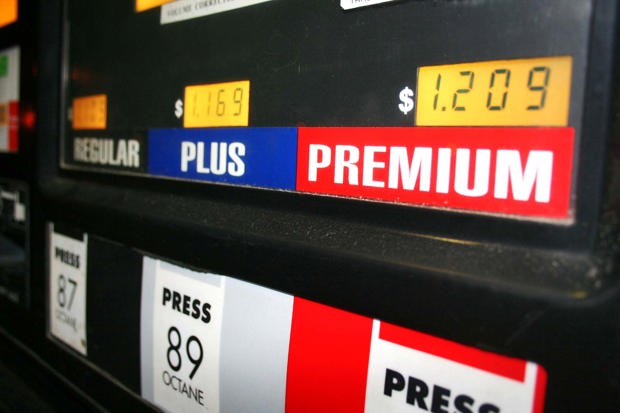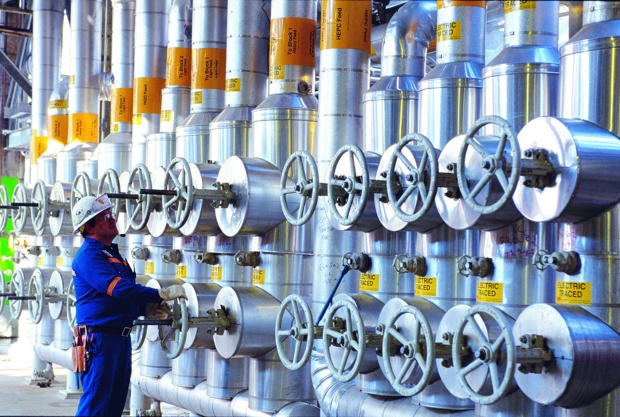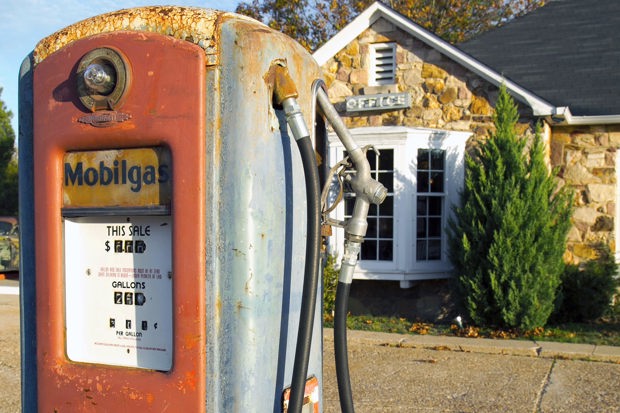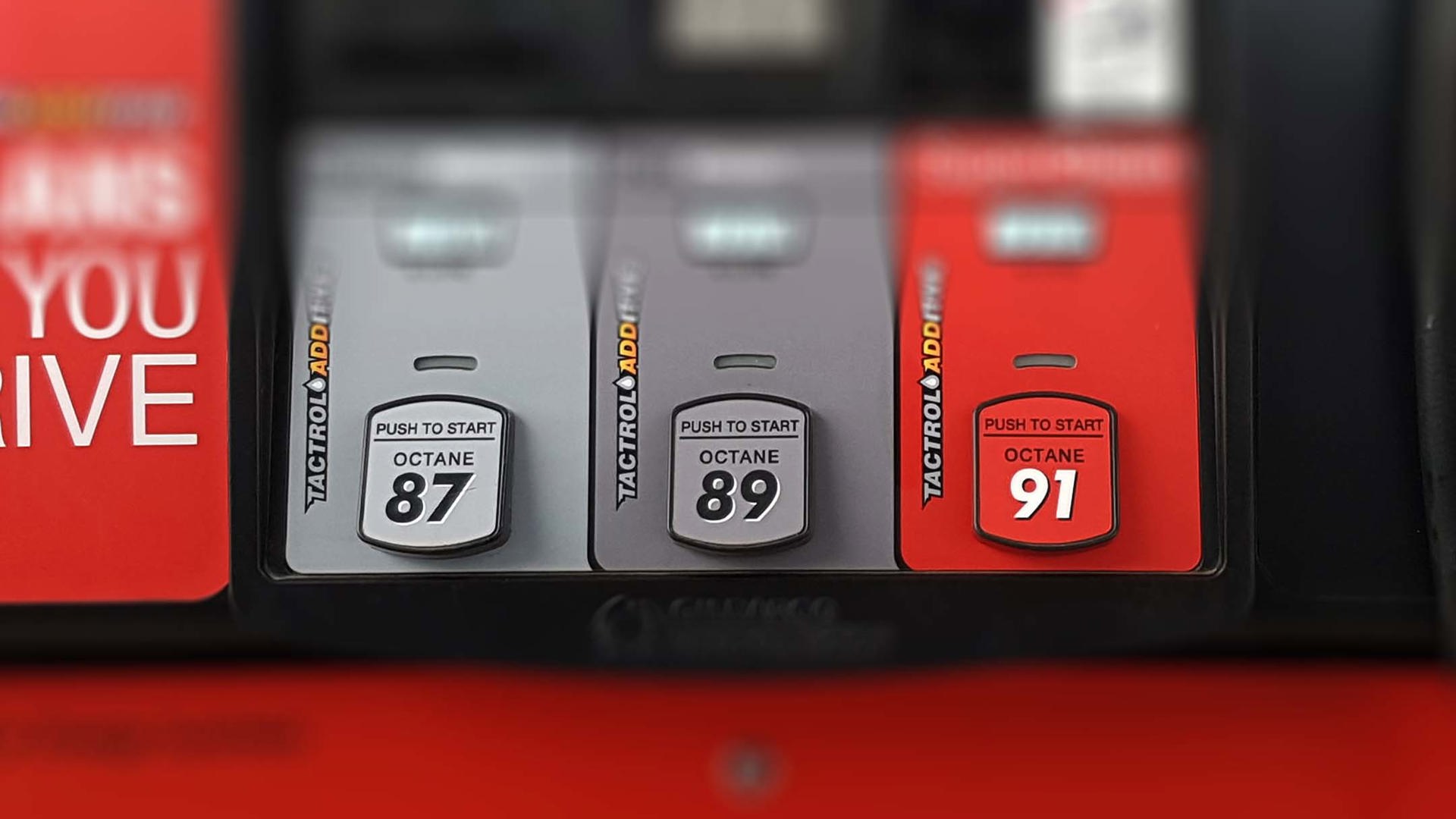Premium fuel – don’t make me laugh. Pay too much attention to the labels on your gas pump, and you’d think the oil companies were all run by Gwyneth Paltrow. This one has additives to clean your engine. Pay a little more and this one will realign your car’s chakra. Just ten cents more gets you the organic, free-range gasoline: the kind that’ll steam-clean your car’s, um, muffler.
The worth of additives is up for debate. Paying more for less ethanol in your fuel is more straightforward, as the more expensive grades of gasoline tend to have less ethanol content. The argument can be made that ethanol’s higher combustion temperatures and washing-down effect (it’s a powerful solvent) might contribute to additional engine wear.
However, what’s most clear, when you pull up to the pump, is the numbers on the handle: 87, 89, 91, and occasionally 94 – the octane ratings.
The first thing to know is that these are no measure of quality. It’s not like your car runs on a nice rosé and you’re trying to check what the critics are saying about the Napa Valley vintages this year. Octane ratings are a measure of resistance to spontaneous combustion – the higher the octane content, the more stable the fuel – and there’s a scientific formula to consider.

But what’s spontaneous combustion? Maybe you’re more familiar with old-school terms like knock or ping. During a normal four-cycle event in a combustion engine, there’s a step where the fuel–air mix is compressed towards the spark plug. The mixture isn’t supposed to ignite until the plug sparks, and then the resultant explosion is supposed to proceed in a clean and even flame-front.
Sometimes, however, the mixture starts to burn before the spark. Sometimes the explosion is uncontrolled and chaotic. Sometimes everything goes off before even the piston has reached the top of the compression cycle.
Knock or ping is kind of like a muscle spasm when you’re trying to ride your bicycle. You lose power, and it’s hard on the engine. Thus, you have to choose the correct grade of fuel required for your engine.
In Canada, octane ratings are calculated using an average, sometimes known in shorthand as the Anti-Knock Index, or AKI.
The AKI is calculated by simply combining the Research Octane Number (RON) and the Motor Octane Number (MON).
The RON is what those uppity Europeans use, and is sometimes called a “headline” number, as it’s the higher of the two. It’s determined by testing the fuel in a single-cylinder variable-compression engine under laboratory conditions, and then comparing results against mixtures containing known concentrations of octane.

MON, on the other hand, uses a higher engine speed (900 rpm instead of RON’s 600 rpm), and adds in variable ignition timing and a preheated fuel mixture. Fuels tend to score between eight and ten fewer points with this test.
It’s not dissimilar to the way in which fuel economy testing now includes an attempt to get a more accurate real-world result. The AKI measures lower than the RON, but it’s a little more accurate.
As you might expect, things get a little more complicated from here on out. For one thing, simply putting in the highest octane number there is doesn’t have any real benefits if your car isn’t designed for it. A standard four-cylinder, as found in something like a Toyota Corolla, will make effectively zero more power on a higher-octane fuel, and just cost you more at the pump.
Further, perhaps you’ve travelled into the Rockies, and are wondering why it’s so hard to find the higher octane ratings. And does that say 85 octane? It does: at altitude, the lowered concentration of oxygen in the atmosphere means the fuel–air mixture is naturally less likely to combust prematurely. You could very easily traipse around Colorado in your Corolla, running 85 octane all the way.
Speaking of US versus Canadian fuels, there is a difference. Our octane ratings are the same, and they’re calculated in the same way, but there are a number of differences in the blend. Canadian fuels are sometimes more volatile, especially in the winter months, as a quicker-to-ignite fuel works better in cold weather. Further, a high-octane fuel in the US might still have more ethanol content than a similar-grade Canadian fuel. Along with the higher combustion temperatures, greater ethanol concentrations mean slightly less power density. There’s also more benzene and sulphur in US fuels.

As an apocryphal aside, high-end VW tuner HPA has noticed that their roughly 500 hp turbocharged builds seem to do much better on US-grade 91 octane than on Canadian-spec 94. Perhaps it’s the blending process, but the US fuel seems to be less prone to knock, allowing for timing to be advanced and more power made.
That’s not the only regional difference. Gasoline companies will tweak their blends all across the country, depending on the temperature, terrain, and season. I’m reasonably sure gasoline in Nova Scotia isn’t cod-flavoured, but it will be of differing chemical composition than that sold in Calgary.
So pick the correct fuel for your machine, paying particular attention if you’ve got a turbocharged or high-revving performance engine. Don’t waste your money if your car wasn’t designed to take advantage of greater octane. Check your owner’s manual if you’re not sure.
And, perhaps most importantly, recognize that a busy gas station might be the best place to get your fuel, even if there’s a lineup. With frequent changes for seasonality and a tendency for fuel to go stale if it sits for too long, you’re best getting gasoline that’s as fresh from the distillery as possible. Even if that sounds like something Gwyneth would say.

